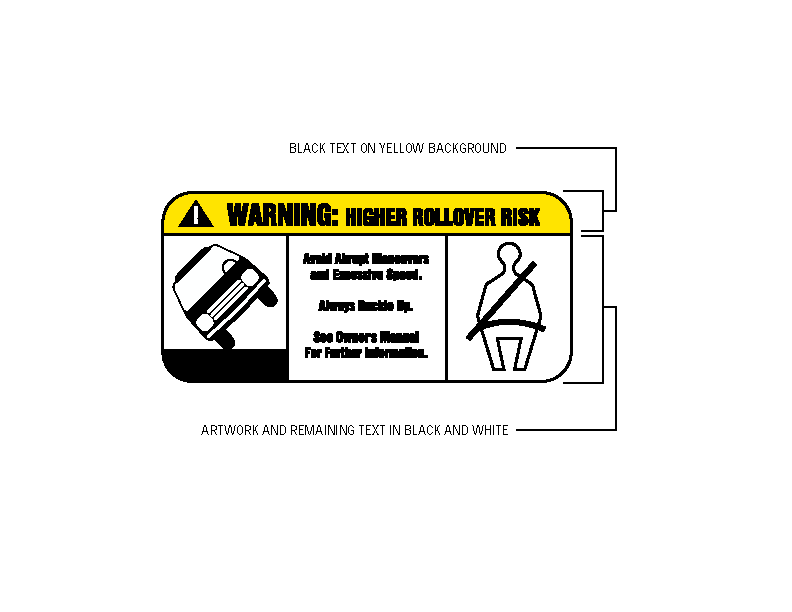















DOT REQUIRES UPGRADED ROLLOVER WARNING LABEL FOR SPORT UTILITY VEHICLES |
|---|

|
NHTSA
March 5, 1999
FOR IMMEDIATE RELEASE
NHTSA 08-99
March 5, 1999
Contact: Tim Hurd
Tel. No. (202) 366-9550
Emphasizing the need to provide American consumers with easy-to-understand information about safety, U.S. Transportation Secretary Rodney E. Slater today announced that manufacturers must use an upgraded standard design for the mandatory rollover warning label in sport utility vehicles (SUVs), featuring bright, colorful graphics so that the label is more easily noticeable to the driver than the current 20-year-old text-only design.
Secretary Slater announced DOT's expected final rule on warning labels at the closing of DOT's first National Transportation Safety Conference in Washington, D.C.
"Safety is President Clinton's highest transportation priority, and this action is evidence of our continuing efforts to improve safety on America's highways," Secretary Slater said. "With sport utility vehicles becoming increasingly more popular, we believe it is important to empower consumers with vital information about safety risks."
SUVs are constructed with higher ground clearance for occasional off-road use and have a higher center of gravity. SUVs' height, along with other factors, contributes to a rollover rate of 98 fatalities per million registered vehicles compared to only 44 fatalities per million registered vehicles for all other light vehicle types, according to the department's National Highway Traffic Safety Administration (NHTSA). More than 60 percent of the SUV occupants killed in 1997 died in crashes when the vehicle rolled over.
Ricardo Martinez, M.D., administrator of the National Highway Traffic Safety Administration, said the rollover potential of SUVs underscores the need for consumer awareness.
"Buying an SUV involves a tradeoff," Dr. Martinez said. "While these vehicles may do well in certain types of crashes, they also are much more likely to roll over. People should be aware of that trait when they are choosing a family vehicle."
In addition to using bright colors and graphics, the new label includes the heading, "Warning: Higher Rollover Risk." Under the heading are instructions to avoid abrupt maneuvers and excessive speed, and to always buckle up, in part, because of the risk of ejection during rollover.
In 1997, 1,088 of the 1,482 SUV rollover deaths involved occupants who did not use their seat belts.
While no location for the current label is specified, the new label must be placed on either the sun visor or the driver side window. Based on the results of consumer focus group studies conducted by NHTSA, the agency believes that these changes will increase the likelihood that drivers will see and read the warning. The agency also is requiring additional information on rollover in the owner's manual. These changes are expected to make the information more understandable to consumers and increase the chance that the labels can affect driver and passenger behavior to reduce rollovers and their consequences.
Dr. Martinez said the upgrade to the existing utility vehicle warning label is just one part of a number of related NHTSA rollover activities, which includes both consumer information, rulemaking and engineering initiatives.
NHTSA recently completed test track research on a number of rollover-inducing maneuvers to determine which might be most useful for identifying potential stability problems. The results are currently being analyzed by the agency to determine the necessity for a rulemaking action or consumer information program that addresses vehicle rollover propensity.
Future rulemaking activities may include changes to the roof crush standard and the use of advanced side glazing for vehicle windows. The agency also is researching integrated seating systems that could help reduce injuries in rollover crashes.
The agency has a more in-depth look at rollover and SUVs on its Web Site at www.nhtsa.dot.gov/cars/problems/studies/LTV/.
###

